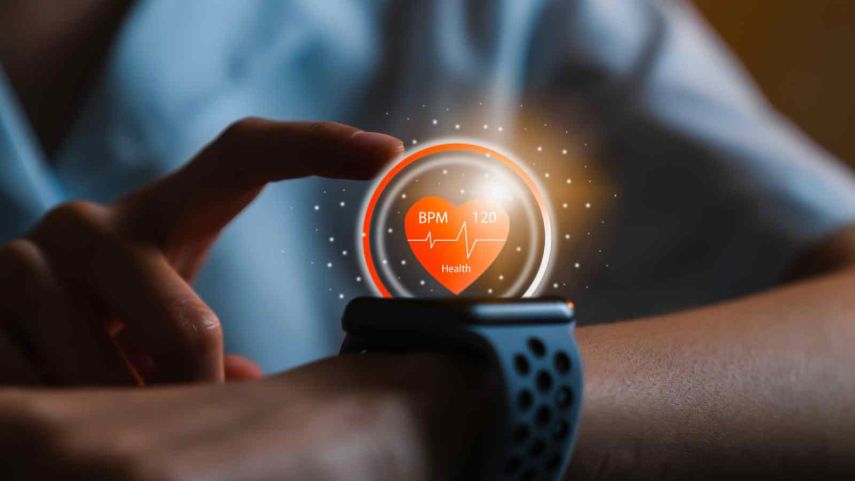In today’s world of constant connectivity, the line between work, learning and living can seem blurred. Carefully maintaining a good balance between work and home life is advantageous, and crucial for eluding fatigue and safeguarding one’s prosperity.
Being unable to manage between education and work has been linked to atrial fibrillation and numerous other adverse health effects, such as decreased bone density, weakened immune system, elevated anxiety and depression.
As a result, the use of technology has been championed as a response to our problems. Using technology to balance work and home life is good, but it is important to acknowledge that it isn’t a silver bullet to solve everything.
How can postgraduate medical students use technology to help improve their work-life balance?
There are many ways that technology can help postgraduate medical students maintain work-life balance, but these are some of the favorites:
1. Online Scheduling

Online scheduling is steadily becoming increasingly popular, allowing people to work flexibly within their lifestyle. Postgraduate medical students can gain several benefits by using this type of app, including the ability to balance their work-life commitments.
Online classes are becoming the norm at many educational institutions, meaning that students can now study at the times that suit them best.
The idea of having applications on mobile devices means that students can access this information whenever they need it, making scheduling easier than ever before. These applications are available on desktop computers, laptops and smartphones, so users can make use of them wherever and whenever they wish.
2. Virtual Classes
Virtual classes help postgraduate medical students balance their work-life by providing optimum learning and teaching opportunities. The virtual classroom incorporates new technology concepts in the most relevant way for these students.
Through PCs and handheld gadgets, medical students have unrestricted access to educational material such as lessons, clips and readings. They can review these things solo or through the web with other classmates to advance their progress and awareness.
Virtual classes also empower postgrad medical students to concentrate on what they need, when and how they can learn better. This enables them to keep studying after class, or even after an extended workday.
3. Wearable Technology

Wearable technology aids postgraduate medical students in balancing their work life and commanding accessible devices such as smartwatches and in-ear biosensors.
As so many medical students are exploring wearable technology, patients can acquire earlier and more precise reports concerning their health status. This can help postgraduate medical students develop better treatment plans.
Wearable technology can also support success in surgery. Medical students can perform high-caliber procedures, benefiting their patients through improved results.
Wearable technology can even monitor stress levels, an invaluable asset to ensure students aren’t burning the candle at both ends. With the help of these features, postgraduate medical students can use technology to ensure they have sufficient time to balance their studies with the other parts of their lives.
4. Social Media and Network Groups
Social media and networking groups provide postgraduate medical students with a gateway to use technology to achieve a successful work-life balance by facilitating connections with like-minded peers struggling with similar issues.
These networks can allow students to trade tips and counsel, ponder proven techniques, inspire each other, extend a helping hand and promote a sense of community.
In addition, social media and networking allow students to benefit from various digital resources, ranging from online tutorials to seminars and videos. These virtual assets can be of particular use in providing education to assist medical students in maintaining a wholesome work-life balance.
5. Remote Collaboration Tools

Remote collaboration tools enable postgraduate medical students to utilize innovation to upgrade their way of life. These tools allow students to team up across any distance, eliminating the requirement to be physically present in a class to take an interest in a shared endeavor.
These tools additionally empower understudies to effectively follow and refresh task plans, which can be complicated when managing understudies worldwide. Postgraduate medical students can better connect and remain on target with their venture by having clear visibility into their associates’ accomplishments and progression.
In addition, remote collaboration ensures that postgraduate medical students can monitor their courses in a more organized and productive manner. It helps to cut down on interruptions and allow students to manage their time more judiciously, in this manner achieving a more balanced work-life plan.
Reputable institutions such as Carson-Newman University offer online MSN-FNP programs that prepare students to make the most of remote tools to take in additional information and use them while learning. Experienced active practitioners teach the program in their communities.
Graduates are prepared with the skills necessary to define their future as holistic and confident family nurse practitioners or advanced practice nurses.
6. Telemedicine
Telemedicine is a technology that has been instrumental in allowing postgraduate medical students to juggle their work-life balance. It enables medical students to access medical care and medical resources regardless of where they are or their health status.
In addition, telemedicine allows medical students to be more flexible in their academic and clinical schooling while still receiving excellent care. It also assists them in organizing their work schedule without having to travel extensively or make day trips to a clinic or health center.
Telemedicine also allows postgraduate medical students to access information online and remotely communicate with other healthcare providers. This means they can access medical advice without establishing a physical presence.
Using this technology also allows medical students to confer with others and readily exchange ideas and opinions. Telemedicine provides postgraduate medical students with a great way to juggle their work-life balance and still receive the quality care they need.
Using Technology as A Postgraduate Medical Student

Technology holds the power to be either advantageous or damaging. How we employ technology to cope with work and education establishes whether it aids or obstructs the results.
Students can organize their daily agendas using automation, notices and management tools to maximize their studies and free time.
In addition, online backup systems, resources and learning aids can be helpful for maintaining focus while completing work-related tasks.
By utilizing technology efficiently, medical students can maintain a satisfactory work-life balance and amplify their capability.







